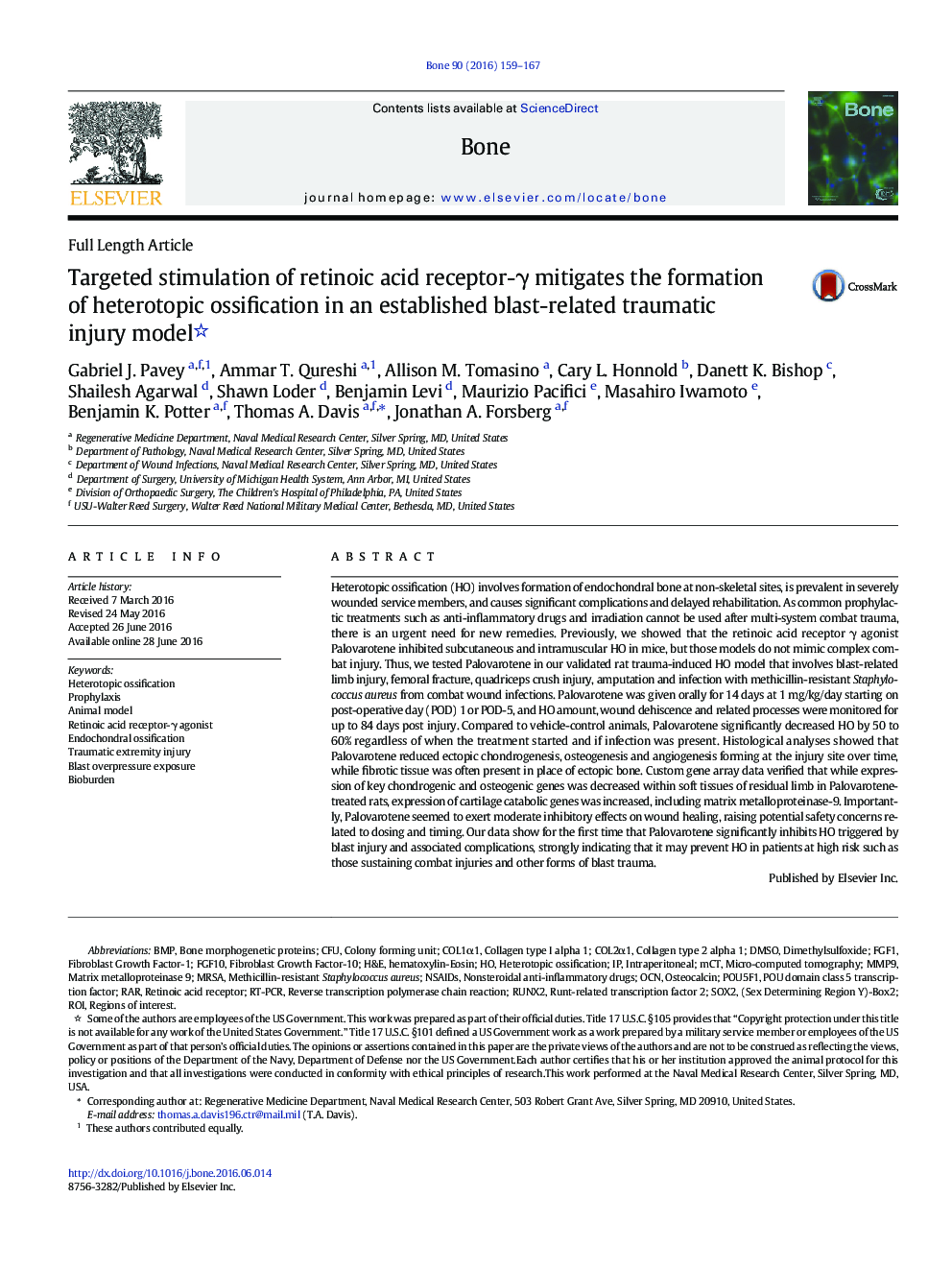| کد مقاله | کد نشریه | سال انتشار | مقاله انگلیسی | نسخه تمام متن |
|---|---|---|---|---|
| 5888829 | 1568129 | 2016 | 9 صفحه PDF | دانلود رایگان |

- There is a high prevalence of heterotopic ossification (HO) following traumatic and combat-related amputations.
- The retinoid signaling pathway and nuclear retinoic acid receptors (RARs) are important regulators of skeletal development and growth as well as ectopic bone.
- Palovarotene, a nuclear retinoic acid receptor γ agonist, is a potent inhibitor of chondrogenesis.
- Palovarotene suppressed post-traumatic chondrogenesis and osteogenesis and mitigated trauma-induced ectopic bone formation.
- This is the first demonstration that a retinoid agonist-based strategy could be used to counteract trauma-provoked HO.
Heterotopic ossification (HO) involves formation of endochondral bone at non-skeletal sites, is prevalent in severely wounded service members, and causes significant complications and delayed rehabilitation. As common prophylactic treatments such as anti-inflammatory drugs and irradiation cannot be used after multi-system combat trauma, there is an urgent need for new remedies. Previously, we showed that the retinoic acid receptor γ agonist Palovarotene inhibited subcutaneous and intramuscular HO in mice, but those models do not mimic complex combat injury. Thus, we tested Palovarotene in our validated rat trauma-induced HO model that involves blast-related limb injury, femoral fracture, quadriceps crush injury, amputation and infection with methicillin-resistant Staphylococcus aureus from combat wound infections. Palovarotene was given orally for 14 days at 1 mg/kg/day starting on post-operative day (POD) 1 or POD-5, and HO amount, wound dehiscence and related processes were monitored for up to 84 days post injury. Compared to vehicle-control animals, Palovarotene significantly decreased HO by 50 to 60% regardless of when the treatment started and if infection was present. Histological analyses showed that Palovarotene reduced ectopic chondrogenesis, osteogenesis and angiogenesis forming at the injury site over time, while fibrotic tissue was often present in place of ectopic bone. Custom gene array data verified that while expression of key chondrogenic and osteogenic genes was decreased within soft tissues of residual limb in Palovarotene-treated rats, expression of cartilage catabolic genes was increased, including matrix metalloproteinase-9. Importantly, Palovarotene seemed to exert moderate inhibitory effects on wound healing, raising potential safety concerns related to dosing and timing. Our data show for the first time that Palovarotene significantly inhibits HO triggered by blast injury and associated complications, strongly indicating that it may prevent HO in patients at high risk such as those sustaining combat injuries and other forms of blast trauma.
Journal: Bone - Volume 90, September 2016, Pages 159-167